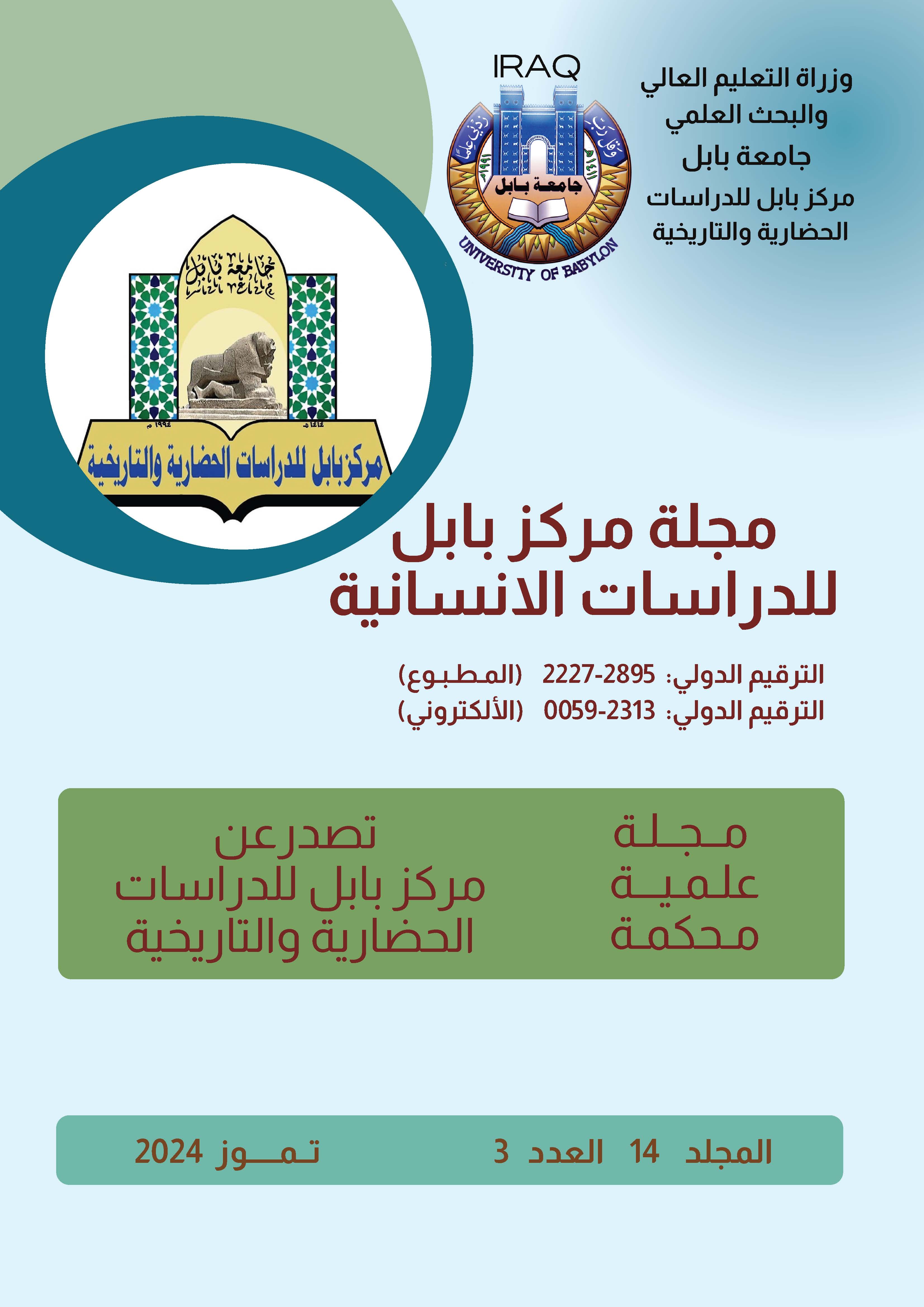Single tools and dualistic devices in the books of the meanings of the Qur’an and its parsing until the fourth century ah ( a semantic grammatical study )
Keywords:
grammatical tools, univocal and dual tools, books on the meanings of the Qur’an, fur, copper, glass.Abstract
Arabic-speaking scholars have been interested in writing special books since ancient times and have studied the meanings of the Holy Qur’an, which is based on two basic pillars: language and grammar, in highlighting the Qur’anic meaning and revealing hidden meanings. We defined it in the fourth century AH. B (Monal and dual devices in books on the meanings of the Qur’an and its parsing until the fourth century AH, a grammatical-semantic study)
Al-Akhfash The use of these tools in the books on the meanings of the Qur’an In the books on the meanings of the Qur’an, these tools are explained in detail by analyzing how they are used in different Qur’anic contexts. Books such as “The Meanings of the Qur’an” by Al-Furra’ or Al-Zajjaj deal with explaining these devices based on their grammatical function and how they affect the meanings of the verses. How these tools enter the sentence and change the meaning is explained and interpreted in the religious and linguistic context. The unilateral and dualistic tools play an important role in interpreting the meanings of the Qur’an by providing a deeper understanding of the texts and analyzing the grammatical and linguistic structure of the verses. These tools help clarify the precise meanings and rhetorical purposes that may be ambiguous without careful grammatical analysis.
The books “Meanings of the Qur’an” are considered among the most important heritage sources that deal with the interpretation and understanding of Quranic texts through careful linguistic and grammatical study. The most prominent of these books is “The Meanings of the Qur’an” for fur, glass, copper, and furniture. Each book is distinguished by its own way of dealing with Quranic texts and analyzing them grammatically and semantically. The grammatical aspect represents the analysis of verbal and nominal sentences. In these books, verbal and nominal sentences are analysed, the elements of each sentence are clarified, as well as parsing, where words and sentences are parsed to clarify their grammatical functions in the verse In terms of grammatical structure, the focus is on the grammatical structure of words, such as verbs, nouns, pronouns, prepositions, and conjunctions, or the semantic aspect, such as the meanings of words and explaining the meanings of strange and ambiguous words in the Qur’an. Syntactic semantics, such as analyzing the effect of sentence structure on general meaning.The “Meanings of the Qur’an” books are considered one of the most important sources that contribute to understanding Quranic texts through grammatical and semantic analysis. These books provide a comprehensive study of every word and sentence in the Qur’an, which helps in understanding the deep meanings and rhetorical methods used in it. These books are considered an important reference for researchers and students in the sciences of the Qur’an and the Arabic language







